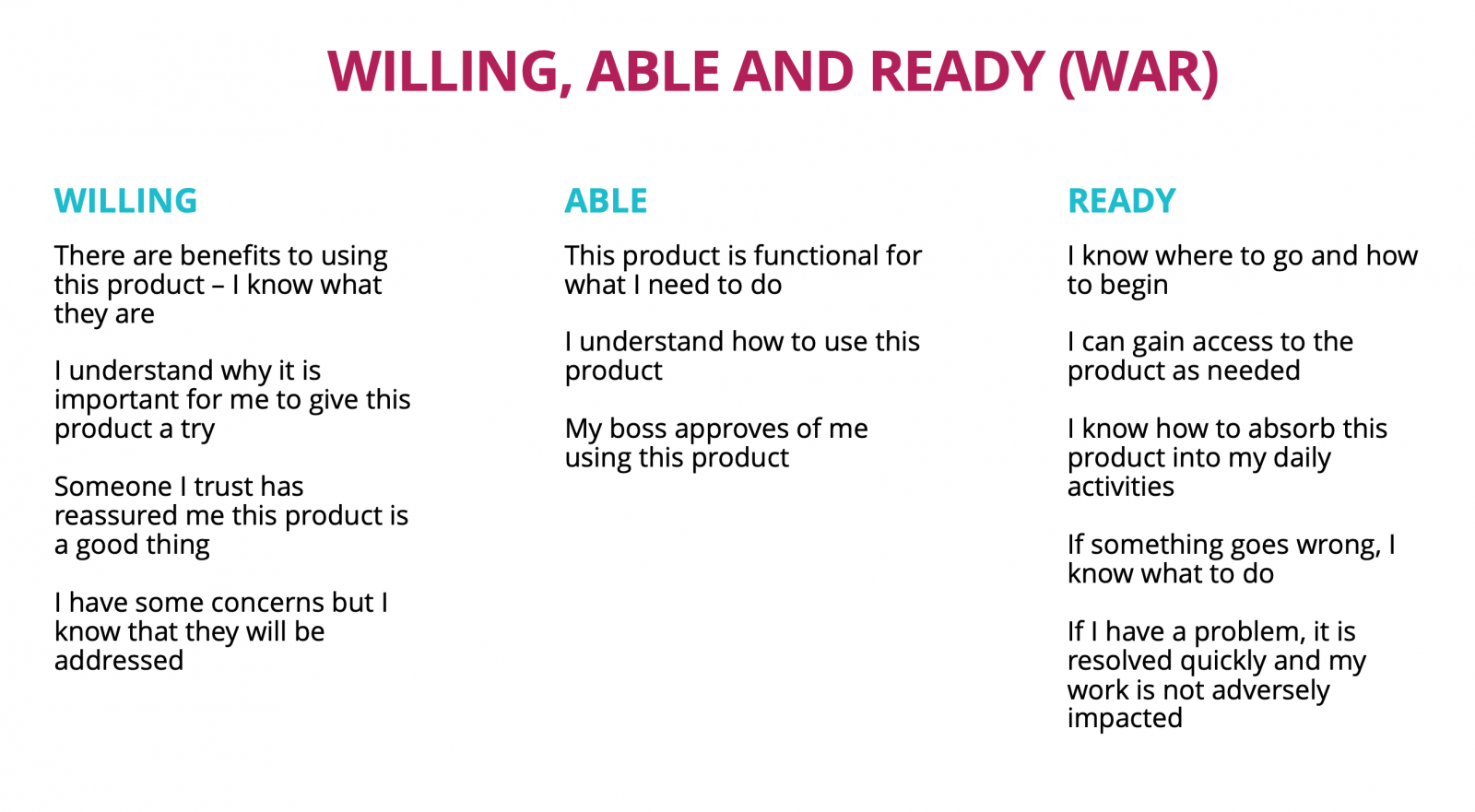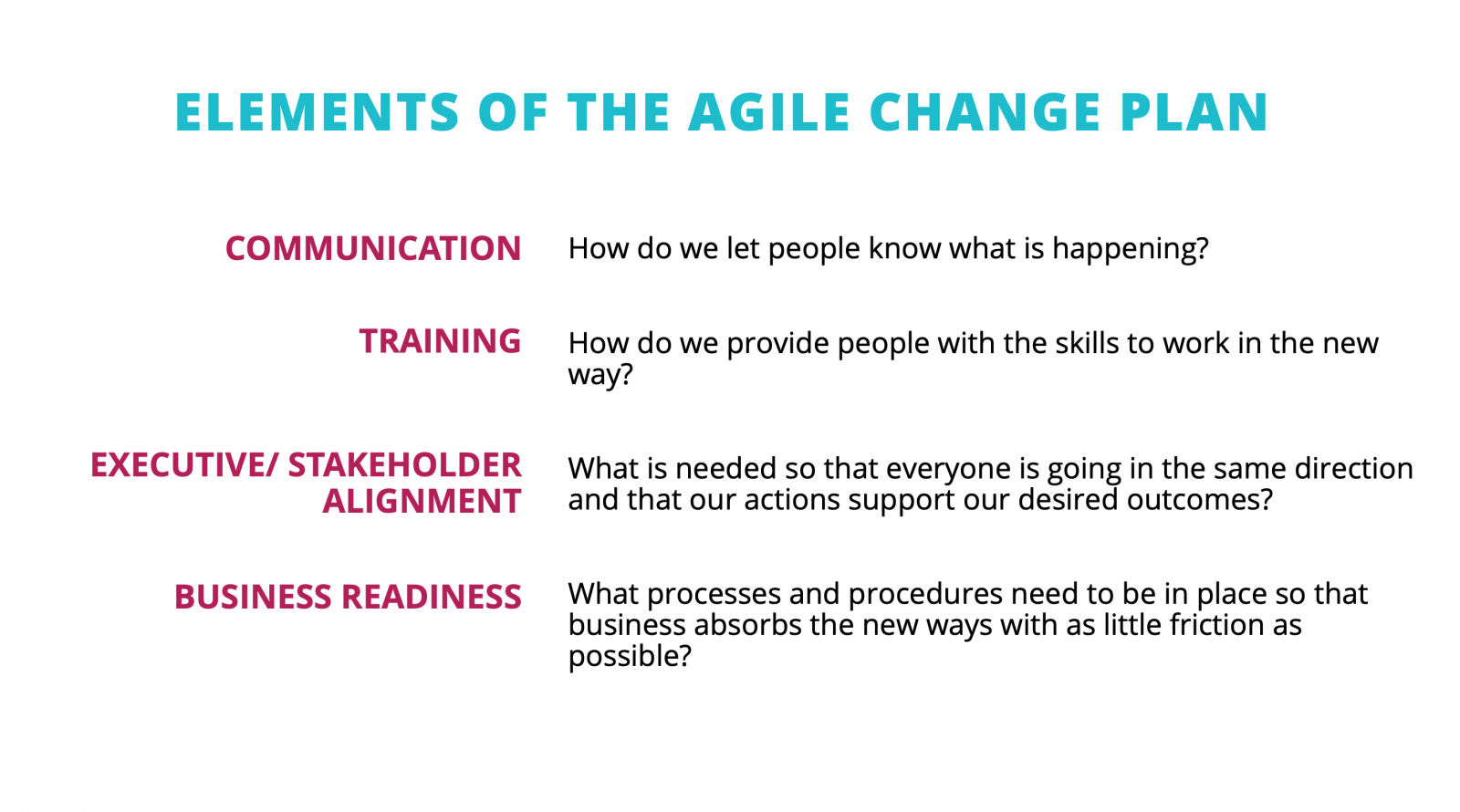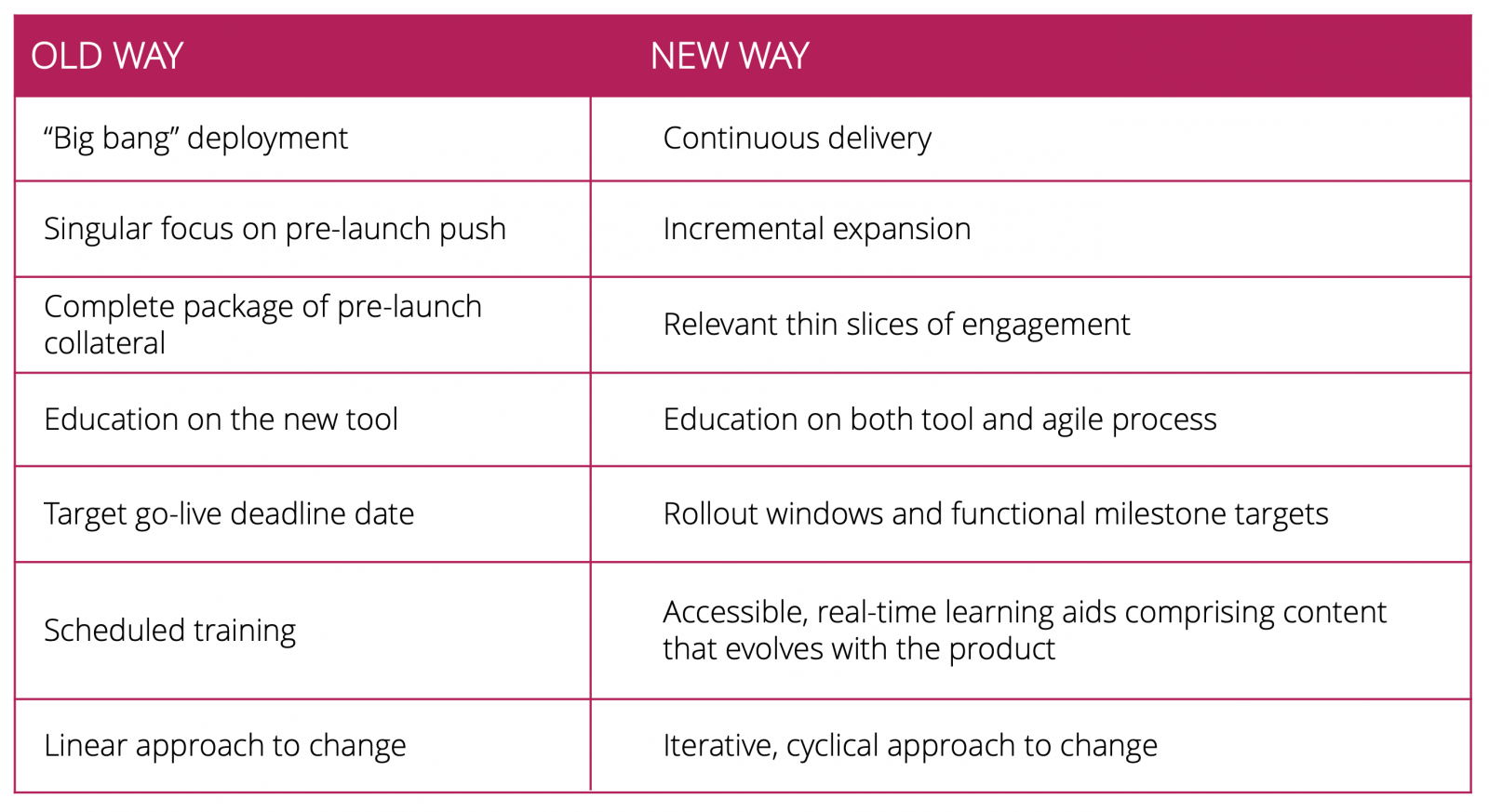Agile project management
Every agile BA's go-to list of 101 project-tracking questions

 Exhibit 1: WAR: Are your users willing, able and ready?
Exhibit 1: WAR: Are your users willing, able and ready?
Every good change management plan has the same basic elements: leadership and stakeholder alignment, communication, training, and activities to support business readiness.
 Exhibit 2: Planning for change
Exhibit 2: Planning for change

“This approach makes so much sense and thinking about what being ‘willing, able and ready’ really helped us to develop a good plan. Understanding that we also could take an agile approach to our launch and adoption activities made it a much more manageable and sustainable process.” (Client launch manager/change lead)
Recently, I have been working with a major retailer to implement a custom service platform which is used by both internal and external users. It is designed to replace multiple existing systems and a plethora of currently heavily manual processes. Naturally, a transformation of this magnitude takes some time to achieve, but that doesn’t mean that real business value cannot be achieved with smaller chunks of functionality delivered at more frequent intervals.Disclaimer: The statements and opinions expressed in this article are those of the author(s) and do not necessarily reflect the positions of Thoughtworks.
